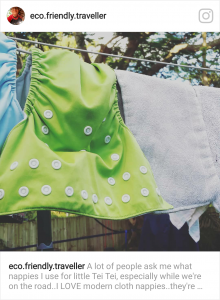9 Essential Items to Build a Plastic Free Starter Kit
We all have the best intentions of living completely plastic-free, but then you accidentally forget to decline your plastic straw when you order your drink, you grab a coffee and realise you left your reusable coffee cup at home, or you can’t make it to the bulk store. We get it. Life happens right?
Don’t get hung up on these things, move on and make changes now so that you can avoid making the same mistakes in the future.
The first step towards change is often the hardest, but a good place to start living a life of less waste is a plastic-free kit.
A plastic-free kit is a collection of essential items which you can keep on your, or near you, at all times so that you’ll never run the risk of being without something and having to opt for the plastic version.
Perhaps you’re just starting out, or you’re looking for some inspiration on how you can reduce your impact even further, so we’ve put together 9 essential items that every good plastic-free kit needs.
Reusable Coffee Cup
Nothing tastes better than a ‘proper’ coffee from a coffee shop, made by an experienced barista. What used to be a quick pick-me-up has now become a morning ritual.
Australians throw out 2.7 million single-use or disposable coffee cups every single day. This adds up to 1 billion coffee cups thrown out every year. Can you even imagine what 1 BILLION coffee cups look like?!
Reduce the waste that you produce by grabbing yourself a reusable coffee cup. Not only do they usually look better than a paper or plastic version, they will keep your coffee warmer for longer and do good for the planet too.
Shopping Bags
Getting yourself a reusable shopping bag is one of the easiest ways that you can reduce your plastic waste.
Up to 5 trillion single-use plastic bags are used worldwide every year. These often end up in our oceans and are often consumed by turtles mistaking them for jellyfish, or by whales.
We love an insulated shopping bags to keep our veggies fresh and frozen food frozen for longer.
Tea Leaf Strainer
If you’re anything like us and average upwards of 5 cups of tea each per day, every day then over the course of a year you’ll be sending over 2,000 tea bags to landfills. The numbers are shocking when you think about it!
Teabags are made from a very fine plastic that realised particles into your tea, and our water stream. To reduce your impact swap your tea bags for tea leaves in a metal strainer instead.
Loose tea leaves are often better quality too, so it’s a win-win.
Water Bottle
More than 60 million plastic bottles end up in landfills and incinerators every day. Six times as many plastic water bottles were thrown away in the US in 2004 as in 1997. Plastic waste is one of many types of wastes that take too long to decompose.
Normally, plastic items can take up to 1,000 years to decompose in landfills so add a stainless steel metal water bottle to your plastic-free kit and reduce your impact on the environment.
Metal Straw
Plastic straws are not biodegradable. Most plastic straws simply break into ever-smaller particles, releasing chemicals into the soil, air, and water that are harmful to animals, plants, people, and the environment.
Fortunately, saying no to plastic straws no longer leaves you with the option of a soggy paper straw. Equip yourself with a reusable straw, they are so easy to keep in your handbag so you’ll never be left without.
Zip Lock Bags/Wax Wrap
There are so many better options for eco-friendly food storage on the market than plastic.
Only recently have the wonders of honey bee products been discovered by the masses. In recent years, people are starting beehives in their backyard and now the benefits of beeswax are going mainstream as well!
They may not be a vegan option but beeswax wraps are safe for you and mother earth. They are made of 100% eco-friendly materials and can be left to compost when ready to discard.
Lunchbox
Say goodbye to pre-made sandwiches or salads in plastic boxes.
Get yourself a lunchbox that is made from natural and renewable wheat straw fibre, starch and food-grade PP instead. They are 100% environmentally friendly, BPA-free, non-toxic, renewable, degradable and food safe.
Toothbrush
It’s estimated that the average person uses 300 toothbrushes a year. That equates to billions of toothbrushes lying in landfills and oceans which never break down.
Swap your plastic toothbrush for a brush made from biodegradable natural fibres like bamboo instead.
Hairbrush
Another plastic product which can be easily swapped for natural material alternatives.
A plastic-free bamboo bristle hairbrush will look oh so pretty sat on your bathroom shelf and will also improve the condition of your hair and scalp.
Do you have a plastic free kit? What do you keep in yours?









